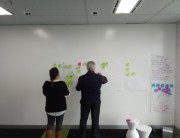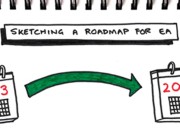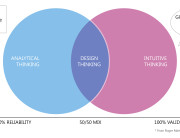On 23rd September 2014 I had the pleasure of speaking at the IRM UK / IIBA Business Analysis Conference on the topic of Business Architecture. In particular I chose to touch on how we use practical business architecture methods to understand the impact of strategy on the business model and how we can link the strategy to implementation.
In the presentation I attempt to answer some of the key questions about the role and value of business architecture:
- What is Business Architecture?
- How do we capture and articulate Business Motivation?
- How do we identify which Capabilities are strategically important and how can Capability Models help us to understand the gaps between our current and target business models?
- How do we create a strategically aligned, capability-driven roadmap?
The key message here being “it may not be the business architect’s job to define the strategy, but it is definitely our job to create a coherent response to strategy, across the dimensions of People, Process and Technology”.
Throughout the presentation I reference a case study (let’s call them ‘InsureCo’) which demonstrates real world uses of business architecture to resolve strategic challenges.
The InsureCo case study also forms the basis of our Applied Business Architecture training course, which teaches people the practical techniques needed to build a business architecture from scratch, in a collaborative team environment. We are also fortunate to have our Applied Business Architecture course endorsed by the IIBA, due to this we are offering IIBA members exclusive deals for the Business Architecture course.
I received a number of questions from Business Analysts interested in understanding how the disciplines of business analysis and business architecture relate to one another. If you would like to learn more on this topic, take a look at my colleague Craig Martin’s webinar “Driving Your BA Career – From BA to BA“.
This leads us into territory that is prime for further exploration, particularly in areas such as Business Process Architecture and how we can endeavour to create more repeatability in the process layer by working within a Process Architecture framework.
Feedback from the audience suggests that this is a topic that is at the forefront of people’s minds in the Analyst community, and it is an area I would like to investigate further. Please do post your questions or comments below and let’s join the discussion.























































